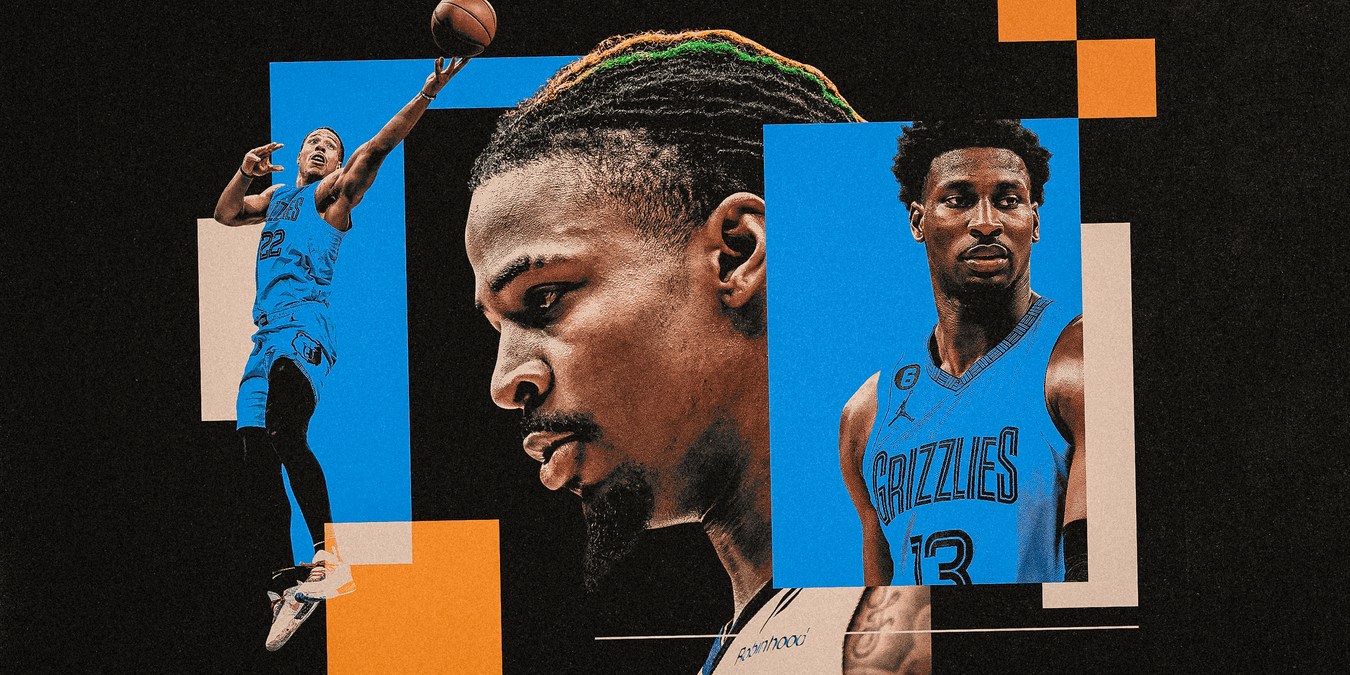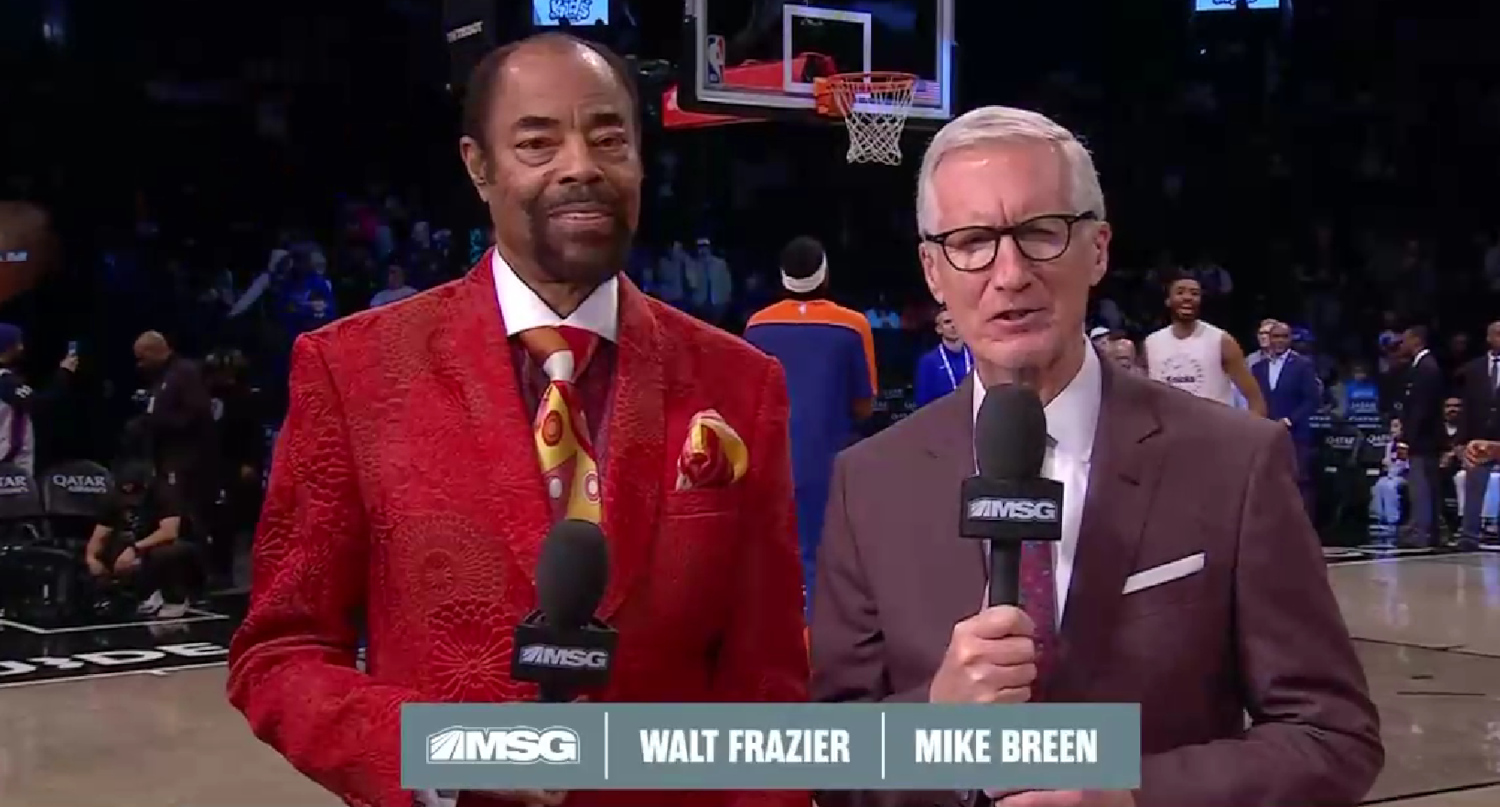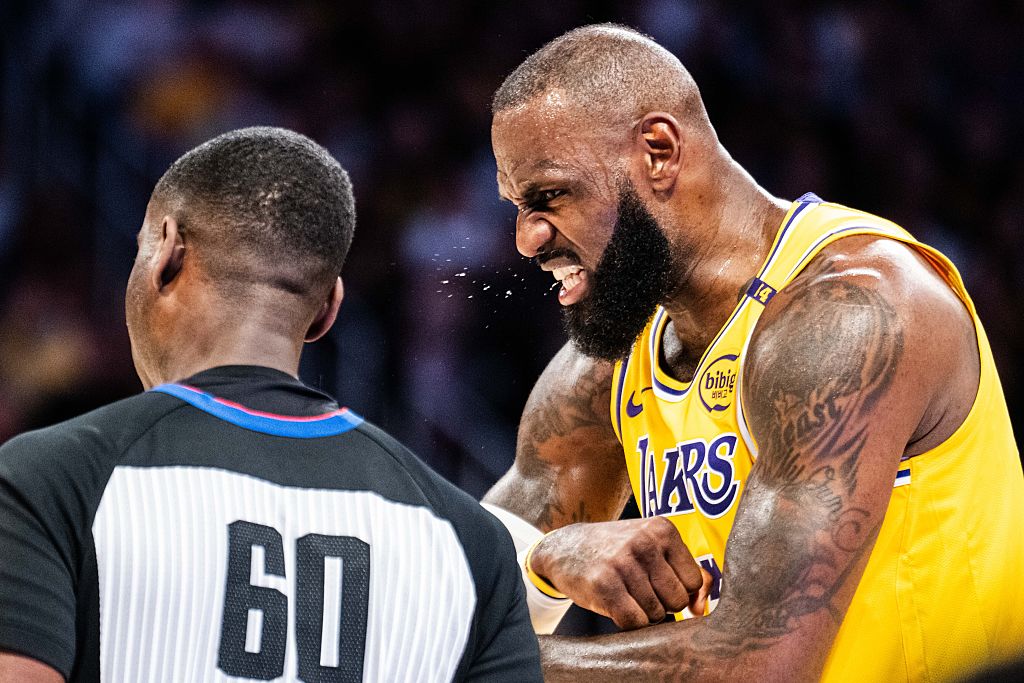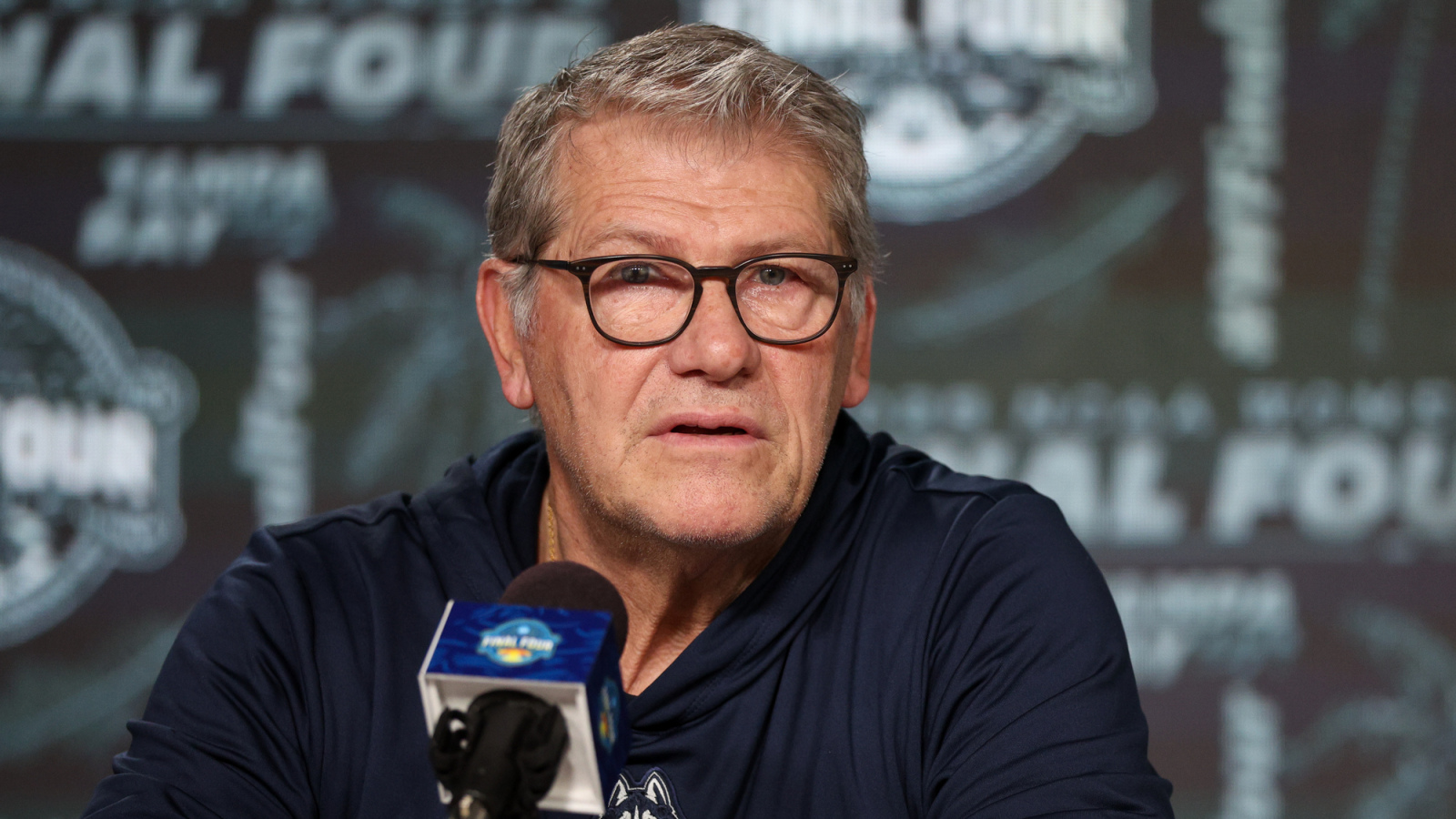MEMPHIS, Tenn. — Three and a half years ago, on Dec. 5, 2021, the Memphis Grizzlies beat the Oklahoma City Thunder by an NBA-record 73 points.
On Sunday, those same Thunder eliminated Memphis from the playoffs in a 4-0 first-round sweep.
The Thunder’s rapid ascent from doormats to dynasty is the main story in that transition, but the Grizzlies’ descent matters, too. Three years ago, it seemed they had the world at their fingertips, with a team en route to 56 wins, a telegenic young star in Ja Morant, plus secondary star talent in Jaren Jackson Jr. and Desmond Bane and arguably the league’s deepest bench behind it.
Advertisement
Memphis hasn’t exactly belly-flopped since — the Grizzlies won 48 games in the minefield of the Western Conference this season — but the franchise nonetheless finds itself at a crossroads. The past three seasons have produced just one playoff series win, despite twice making the field as the West’s second seed. This spring, a late-season collapse led to Taylor Jenkins’ firing as the Grizzlies went 14-23 over their final 37 games (including the Play-In and playoffs).
Memphis also failed to beat any of the league’s top 12 teams after Feb. 2, going a combined 0-19 against those teams (not a typo). Their best wins in that stretch were beating the 44-win Detroit Pistons on the road and dancing on the desiccated corpse of the Dallas Mavericks in the Play-In Tournament. Memphis got to 48 wins because, aside from two early losses to Brooklyn, the Grizzlies reliably beat the tar out of bad teams. The good ones they needed to beat in the playoffs, alas, were more problematic.
So, what happened here?
In analyzing the Grizzlies, I wanted to dig deeper into a few questions: What caused their elevator to stall out before they reached the penthouse? Are there more general lessons behind it? And what does success look like from here? I have my own opinions, but I also talked to several executives and scouts about the Grizzlies, where they’ve been and what they can do now. Those people were granted anonymity so they could speak freely. What follows is a consensus of their takeaways.
Before I delve too deeply: Going from good to great is hard. It may seem inevitable that a young team that gets to 50 wins will inevitably hit 60 next, but that’s not how it works. The history of the NBA is littered with examples of precocious young cores that never quite got to the point of being a true title contender.
Advertisement
It’s also easy to imagine alternate scenarios where the narrative seems much less harsh. Morant was hurt in the 2022 and 2023 playoffs and again in Game 3 against Oklahoma City. A Grizzlies fan could credibly argue that if Morant doesn’t get low-bridged by Lu Dort before halftime in Game 3, the Grizzlies go back to Oklahoma City with the series tied.
That’s been a common postseason theme. Injuries to Steven Adams and Brandon Clarke in 2023 eviscerated Memphis’ center rotation and arguably torpedoed a conference finals run. Even this year, if players such as Clarke and Jaylen Wells stayed healthy and the Grizzlies eked out another win or two, they land in a very different seeding situation for the playoffs and, at the very least, don’t lose by 51 to the Thunder in the opener.
That overstates the positive case. The Grizzlies aren’t anywhere close to contention right now, as GM Zach Kleiman admitted in a refreshingly self-critical postseason news conference, and that wasn’t where they expected to be right now. (Full disclosure: I was the Grizzlies’ VP of basketball operations from 2012 to 2019 and overlapped with Kleiman in my final two years there.)
In talking with several executives about where Memphis might have misstepped over the past three years, four main themes came up. And literally everyone alluded to multiple factors and a confluence of events that “almost snuck up on them,” as one put it.
However, one factor was far more prominent than the other three. Let’s go through them one by one, and the broader lessons.
Get the centerpiece right
By far, Morant was the biggest lightning rod for execs explaining why Memphis hadn’t taken another step forward. In their view, Morant’s lack of dependability — for health, for shooting, for defense, for leadership, for avoiding entirely avoidable suspensions — makes it impossible to build a team around him.
Advertisement
That said, few blamed the Grizzlies for riding with Morant this far. The alternative, at almost any point before his first suspension, would have been a Nico Harrison-type situation that would have been wildly unpopular.
Nonetheless, Morant has slipped. Once viewed as a potential All-NBA player, his lack of progress as a defender or — especially — as a shooter makes it hard to envision him hitting that level even if healthy. Morant’s thin frame also takes a pounding on his drives to the hoop, and he was injured on three collision plays this year: twice when he was undercut in mid-air and once on a crunching screen by Daniel Theis.
He hasn’t played more than six consecutive games since March 2023. He got to six just once in that time. Morant played only 57 games even in his best season and has averaged 44 per over the last four years.
Morant also has some work to do on other fronts. League sources I spoke with wondered whether the Grizzlies had the right coaches and staff in place to reach Morant, as his multiple suspensions in 2023 don’t seem to have changed him.
But Morant’s issues extend to the court, too. He plays with tremendous joy when things are going right, and he’s capable of mind-blowing passes that only a few other players can execute. Even this year, he had moments of absolute sorcery; for instance, this clip wasn’t an assist, so it didn’t make the highlight reels, but holy smokes.
However, he also contended for the league lead in eye-rolls and sulked this year when the revamped Memphis offense sent him to the corner. Watch him miss a chance for an easy layup in the clip below because he’s too busy brooding to look for the ball while his man doubles Jackson.
Additionally, Morant has never been good on defense; in addition to lacking size, he can be lethargic and gamble-prone. (Another thing that hurts his defensive value: Crashing to the floor on drives and creating five-on-fours the other way.)
For those reasons, many execs think Morant’s trade value is limited despite his star power. He’s an electrifying player who can sell tickets and merchandise, and that could be a reason for a small-market team like Memphis to hang on to him (or for another to acquire him, perhaps). However, a trading partner will view those same dependability issues as a potential liability on a max deal that still has three years and nearly $127 million left.
Advertisement
Don’t overextend on supporting cast
I was a bit surprised how many people I talked to looked at Bane’s situation as a negative. He has four years and $163 million left on his current contract, but the execs I talked to said he wasn’t good enough to be an elite team’s third-best player and was overpaid for what he was.
This shade feels too harsh — Bane isn’t an All-Star, but he’s a 41-percent career 3-point shooter with an average 18.5 player efficiency rating over the last three seasons. He’s also, by all accounts, a relentless worker and a model citizen.
However, that perception of Bane’s deal in other front offices does matter for the Grizzlies’ optionality: Attempting to move Bane for assets or multiple young players might not generate much return.
(While we’re here: One thing everyone I talked to agreed on: Jackson as the “No. 2 guy” was worth every cent. Maybe they were humoring me because I was part of the front office that drafted him, but he’s also the team’s only All-NBA candidate.)
Hit the big swing trade
The Grizzlies have tried to take big swings in the trade market at various times in the last three years, including engaging the Phoenix Suns on Kevin Durant this year. However, the biggest one that actually got completed was dealing Tyus Jones and two first-rounders for Marcus Smart when he was just past his sell-by date in the summer of 2023.
It’s somewhat ironic given that the Grizzlies have nailed so many small moves in the same period. “The Smart trade killed them,” as one rival exec put it, costing them draft assets and a $20-million salary slot for a whole lot of not much. On a roster that couldn’t afford a miss once Jackson, Bane and Morant graduated to expensive veteran deals, Smart was nearly dead money. He was neither healthy nor happy in Memphis, and his level of play dropped off even when he was active; the Grizzlies ended up giving Washington another first just to move off the last year of his deal.
Finding cheap talent is hard
Kleiman criticized himself in his postseason media session for not picking up Jake LaRavia’s option as added depth, but the deepest wounds likely came before this season.
Memphis pursued contending with a Morant-Jackson-Bane core when the other two starters were Dillon Brooks and Steven Adams, and the bench was constantly extending leads with players like Jones, De’Anthony Melton, Kyle Anderson and Clarke.

Brandon Clarke has been with the Grizzlies since 2019. (Ken Blaze / Imagn Images)
However, only Clarke remains from that supporting cast. Bets on players like Smart, Ziaire Williams, Derrick Rose and David Roddy to replace them haven’t panned out. Even the ones who were OK (John Konchar, Luke Kennard, the still-developing Zach Edey) were a downgrade from their predecessors.
The Grizzlies, it should be said, have done a fair job of backfilling those positions with other cheap finds of late. Scotty Pippen Jr. was a revelation in the playoffs and is on a minimum deal for three more seasons. Wells was the 39th pick in 2024 and ended up starting and challenging for Rookie of the Year. Santi Aldama was the 30th pick in the 2021 draft, and while we’d all like to see a bit more fire from him, his ability to play small forward at 7-feet tall and be an inside-outside threat adds vitality to the bench. Vince Williams Jr., the 47th pick in 2022 who struggled with ankle injuries this season, could be the next to emerge.
Advertisement
The reality is that they’ll almost certainly never have a bench as strong as that 2022 unit, when their three best players and Clarke were still on rookie deals so they could bring multiple $10-million players off the pine. Going forward, they’re likely to have three max or near-max players soaking up salary at the top of the food chain, which means they need to find more players like Pippen and Wells at the back end.
Now what?
There’s a difference between disappointing and bad. The Grizzlies are the former but not the latter; not to go all Mat Ishbia here, but 15-20 other teams really would trade situations with them.
For all that hasn’t gone well, the Grizzlies still have a core group in their mid-20s, all their future first-round picks after this June and a tantalizing pick swap in 2030 with the lesser of the Suns or Wizards picks. Sans Smart, their salary cap is almost too clean, to the point that they might want to re-sign Aldama just to have a tradeable salary going forward.
Additionally, part of the reason the Grizzlies took half a step back this year was intentional. Trading Smart for cap space at midseason was a smart way to maximize the team next year and beyond, but it came at a cost to the 2024-25 team; obviously, the judgment lying not too far beneath the surface was that the current team wasn’t quite good enough to contend.
As a result, Memphis has multiple pathways depending on whether or not Jackson makes an All-NBA team.
Let’s assume he does, which is both the better and more likely of the two scenarios. By making All-NBA, Memphis can sign him to an extension for 30 percent of the max despite his raise being more than the allowable 140 percent. Memphis would have four open roster spots and $48 million below the apron, would have access to its full nontaxpayer midlevel exception and could either re-sign Aldama and Kennard or, more impactfully, inject itself into several trade scenarios via future picks and sign-and-trades of expiring money. (Memphis also has Marvin Bagley’s Bird rights for potential funny money in a sign-and-trade deal.)
Roster upgrades become more challenging to execute if Jackson doesn’t make All-NBA. The Grizzlies would likely move to protect the asset rather than allow him to hit unrestricted free agency next summer, and the way to do that would be to use cap space on a renegotiate-and-extend deal. That would limit the Grizzlies to the room exception and remove many sign-and-trade shenanigans since they’d have to renounce Kennard and Bagley.
Advertisement
This scenario would also likely involve re-signing Aldama via his $11.9-million cap hold, possibly to a bloated short-term deal that served as a walking trade exception for midseason. A salary-dump trade with Konchar’s remaining two years and $13 million might also be needed.
Either way, it’s easy to talk yourself into a scenario where the Grizzlies’ talent base is roughly on par with their 2022 and 2023 teams by the 2026 trade deadline. The three-man core is the same, Edey is coming along as a starter, Clarke will be back, and the bench looks as solid as it has in a couple of years. Given the assets and flexibility Memphis still has to pull off trades, acquiring one or two more starter-caliber players feels like a surmountable challenge.
For a model, the Grizzlies can look at Cleveland. Remember, the Cavs’ rebuild had appeared to level off 12 months ago, only to blast off again with the help of improved health, a coaching change and a couple of value additions to the core. Memphis’ core isn’t quite as good as Cleveland’s, but the other parallels seem fairly obvious, right down to the small All-Star point guard paired with a Defensive Player of the Year at power forward.
However, getting into the rarified air of Cleveland, Boston and Oklahoma City also requires more superstar power than the Grizzlies have on hand. There’s no Donovan Mitchell here, let alone a Jayson Tatum. Ultimately, it’s hard to see the Grizzlies vaulting into true contention until the best player on the team is somebody other than Morant.
Would they consider trading him? Kleiman pretty emphatically shot down those rumors this past winter, and Memphis might not like what it gets in return. But there’s a point where you wonder if a change of scenery would help everybody.
More questions loom beyond that. Could they package players and picks (say, Bane and Edey) for an A-list star? Does any player of that ilk really want to come to Memphis? Do they need a tougher coach for Morant? Is season-ending interim coach Tuomas Iisalo up to the job? Whomever they hire, can they get this core to be more threatening in late-game half-court situations? Is there some other side door into contention we’re not considering?
Either way, it shapes up as a very interesting offseason in Memphis, where many difficult decisions with non-obvious answers face the franchise. Those choices will likely dictate whether the ultimate story of this recent two-season stretch is more of a speed bump on the road to further success or a pothole that sent them careening off the highway.
(Illustration: Dan Goldfarb / The Athletic; top photos: Christian Petersen, Alex Goodlett, Harry How / Getty Images)



